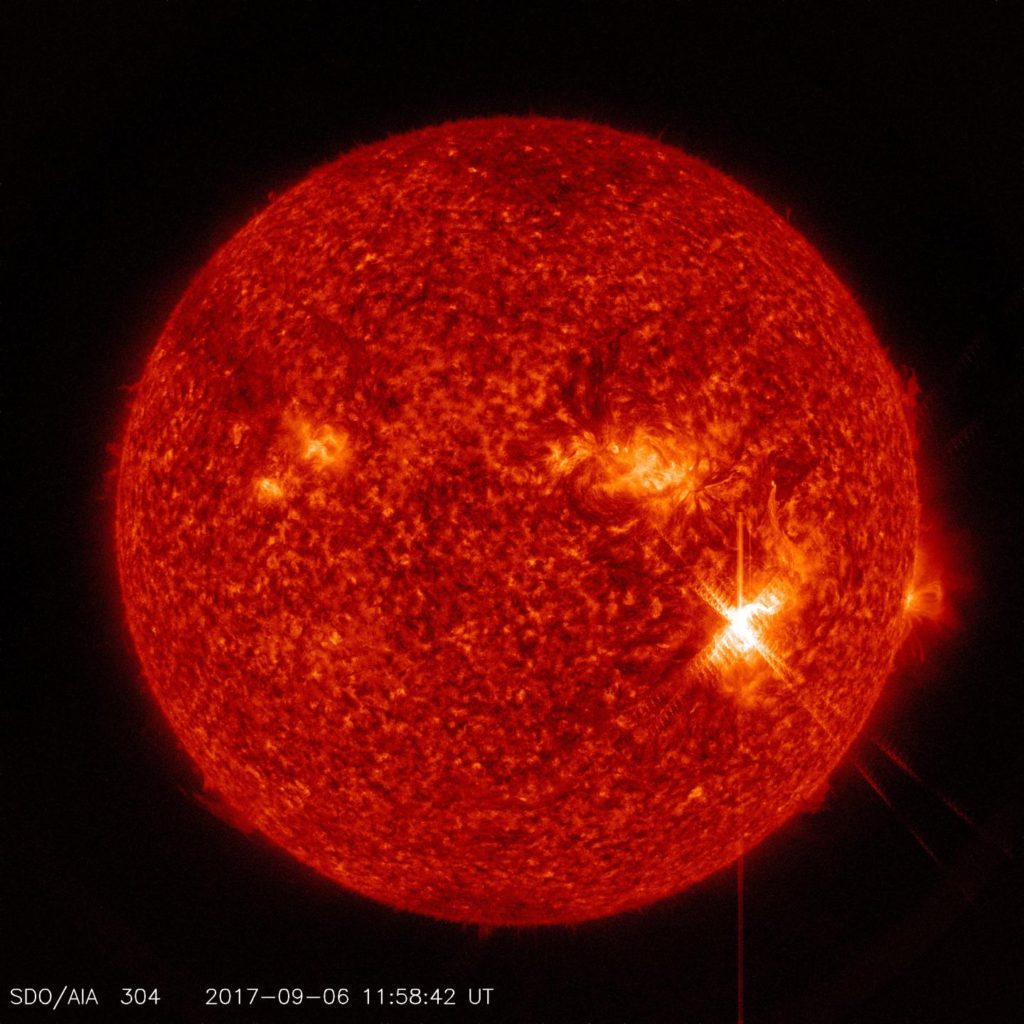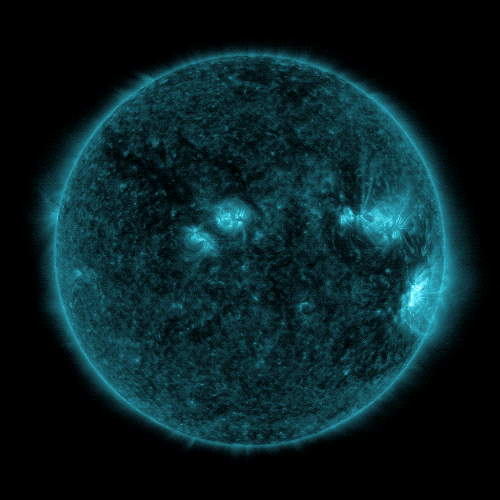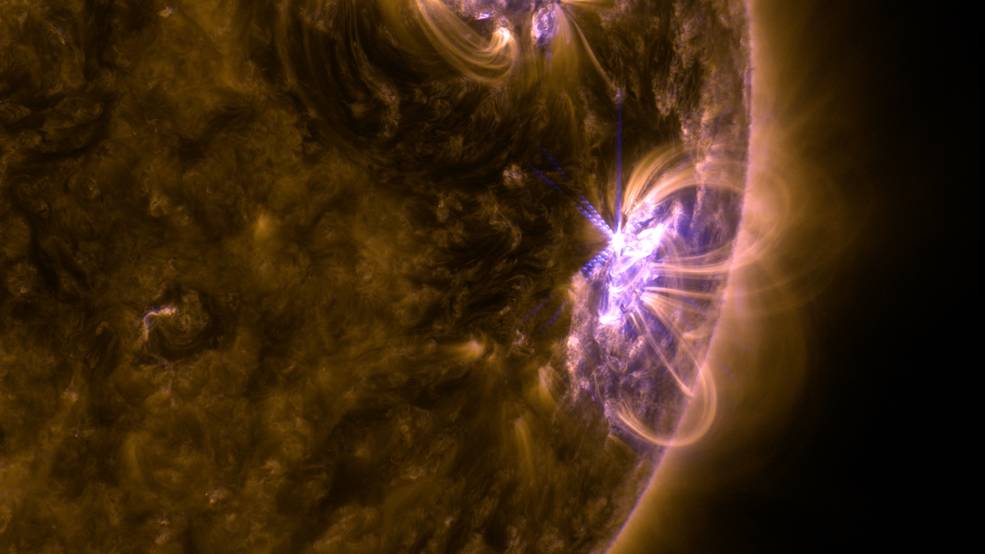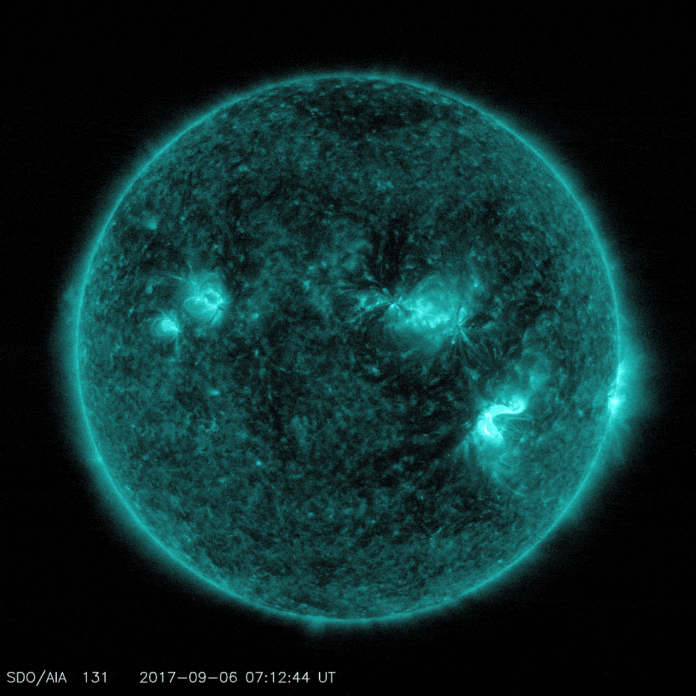Solar flares are sudden flashes of brightness that are observed close to the Sun’s surface. They are hard to capture on camera as happen at random times. When the sun is particularly active, solar flares can happen several times a day. But in quiet periods there may be as little as one a week. However, this month, with thanks to NASA’s Solar Dynamics Observatory (SDO), not one but two significant solar flares have been captured on camera.

The first one to be imaged peaked at 5:10 am EDT in the morning of September 6th, 2017, with the second happening just a few hours later at 8:02 am EDT. NASA’s SDO is constantly keeping a watchful lens on the sun, and so luckily managed to capture both spectacular events. Radiation that’s emitted from solar flares can be harmful enough to disturb the atmosphere where GPS and other communications travel, but thankfully it’s not strong enough to pass through our planet’s tough atmosphere to do any real harm to ourselves.

Flare one was classified by experts as being an X2.2 flare, whereas the second was an X9.3 flare. The X-class is the class used to describe the most intense flares and the number represents its strength. Both these flares are said to have come from a region called AR 2673 where another solar flare was produced just a few days earlier, on September 4th, 2017.
The current solar cycle began in December 2008 and is expected to last approximately 11 years. So far the X9.3 flare is the largest in this cycle, and experts are fairly confident there will be none bigger as the cycle is now decreasing in intensity as it comes to its end. For information on how these flares could affect the Earth check out NOAA’s Space Weather Prediction Center. It’s the official channel for getting real information regarding space weather alerts, warnings, and more.

Credits: NASA
More News to Read
- Astronomers Discover Strange ‘Glitch’ in Binary System
- Scientists Taught Robots to Understand Brain Function and Brain Disorders Such as Alzheimer’s
- Astronomers Measure Distant Galaxy’s Magnetic Field Shedding Light on Cosmic Conundrum
- Astronomers Discover Distant Starburst Galaxies
- Sandia’s Z Machine Tests Contradict Black Hole Models

